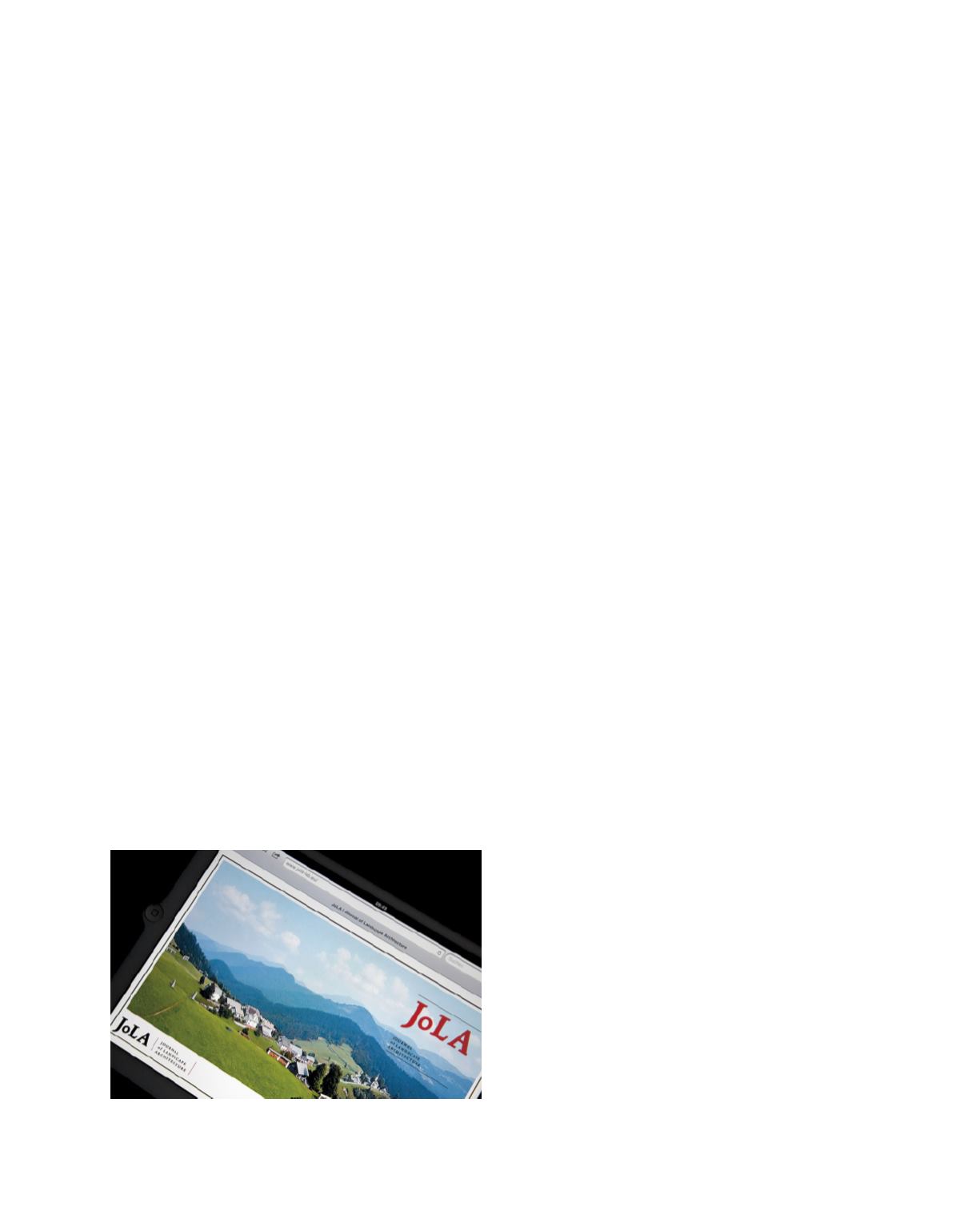
AHO WORKS RESEARCH 2012
Urbanism and Landscape
PROJECT LEADER:
Kelly Shannon (articles editor)
FUNDER/DURATION:
ECLAS (European Council of Landscape Architec-
ture Schools)
Appointment by ECLAS in October 2010 (for an
indefinite period)
Published by Taylor & Francis (
com/rjla)
NETWORK/ADVISORY BOARD:
OTHER EDITORS:
Karsten Jørgenson (Norwegian University of Life
Sciences), Articles editor
Bernadette Blanchon-Caillot (École Nationale
Supérieure de Paysage), Under the Sky editor
Kamni Gill (University of Sheffield), Thinking Eye
editor
Bianca Maria Rinaldi (University of Camerino), Book
reviews editor
EDITORIAL ADVISORY BOARD:
Thorbjörn Andersson, Sweden; Jean-Marc Besse,
France; Jackie Bowring, NewZealand; Diedrich Bruns,
Germany; Elen Deming, USA; RosaleaMonacella, Aus-
tralia; Martin Prominski, Germany; Jörg Rekittke, Sin-
gapore; Marc Rumelhart, France; John Stuart-Murray,
UK; Simon Swaffield, New Zealand; Marc Treib, USA;
Udo Weilacher, Germany
During 2012 the Institute of Landscape and Urbanism
acted as a central coordinator in the editorial team of
the Journal of Landscape Architecture.
JoLA
is the
peer-reviewed journal of the European Council of
Landscape Architecture Schools (ECLAS). Since 2006,
JoLA has published bi-annually; beginning in 2014, it
will publish tri-annually. Alternate issues follow a call
for papers on a specific theme.
JoLA’s
aim is to support,
stimulate, and extend scholarly debate in landscape
architecture, cultivating the diverse identity of the dis-
cipline. It fosters research methodologies specific to
landscape architecture and aspires to expand the range
of communication modes for research.
The ‘publish or perish’ mantra has clearly reached
landscape architecture as young and more established
academics alike are pressured to constantly publish in
scientific peer-reviewed journals in order to maintain
credibility. Like most editors we have been struggling
with how to reasonably meet new realities of academia
without compromising an integrity, which is rooted in
two principles: to contribute to the scientific knowledge
of landscape architecture by publishing new research of
the highest standards, while respecting the spirit and
letter of the conventional rules of scientific publishing;
to simultaneously recognize the necessity (and hence
incorporate) unconventional forms of knowledge crea-
tion (images, critical reading of built work, etc.).
The ultimate aim of academic research is to produce
knowledge and generate constructive insights. Jour-
nals disseminate such knowledge and insights.
JoLA
attempts to do this for landscape architecture and its
allied fields. Landscape research is clearly reaching
new levels of complexity as it positions itself centrally
and culturally in the discourse on urbanism, ranging
from disaster reconstruction to river re-engineering
to aerial reconnaissance. And with this expanding role
and rising complexity come new challenges and new
pressures but also new horizons and new unexplored
territories. In order to be correct and relevant and
to obtain an optimal combination of forms of knowl-
edge
JoLA
has sought, since its foundation, to break
the mould of more traditional journals. In addition, to
complement the forms of knowledge of conventionally
produced scholarly articles,
JoLA
gives space to the
reflective practitioner and to design research.
JOURNAL OF LANDSCAPE ARCHITECTURE (JOLA)


